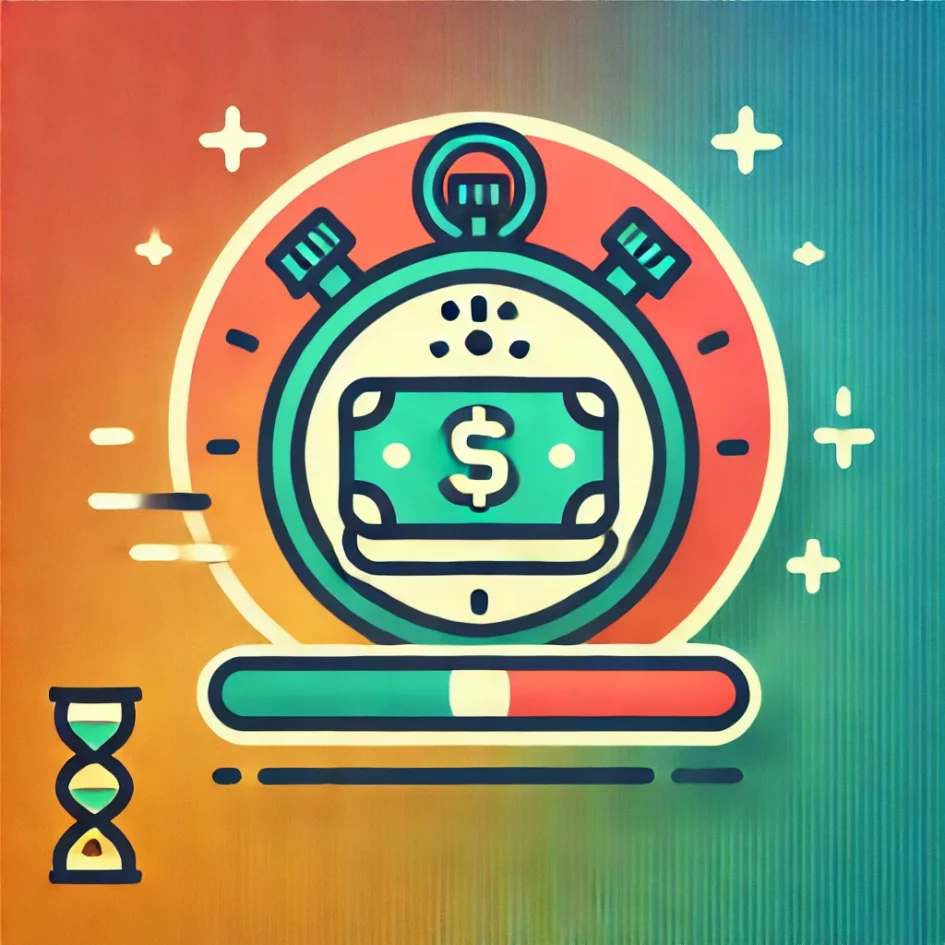Short-term loans are a form of credit designed to provide quick financial relief. These loans are usually repaid over a short period, ranging from a few weeks to a year. They can be helpful when you need fast cash for unexpected expenses or emergencies. However, they come with their own set of challenges and considerations. In this guide, we’ll explore what short-term loans are, their benefits, drawbacks, and tips for using them wisely.
Short-term loans are a form of credit designed to provide quick financial relief. These loans are usually repaid over a short period, ranging from a few weeks to a year. They can be helpful when you need fast cash for unexpected expenses or emergencies. However, they come with their own set of challenges and considerations. In this guide, we’ll explore what short-term loans are, their benefits, drawbacks, and tips for using them wisely.
Short-term loans are a form of credit designed to provide quick financial relief. These loans are usually repaid over a short period, ranging from a few weeks to a year. They can be helpful when you need fast cash for unexpected expenses or emergencies. However, they come with their own set of challenges and considerations. In this guide, we’ll explore what short-term loans are, their benefits, drawbacks, and tips for using them wisely.
Types of Short-Term Loans
There are several types of short-term loans that cater to different needs:
- Payday Loans: These are small, high-interest loans that are typically due on your next payday. They are easy to obtain but come with high fees, which can lead to a cycle of debt if not managed carefully.
- Personal Loans: Short-term personal loans are typically unsecured and can be used for a variety of purposes, such as covering medical bills, car repairs, or other emergency expenses. They usually have lower interest rates compared to payday loans.
- Title Loans: These loans require you to use your vehicle as collateral. They can provide quick cash, but failure to repay can result in the loss of your car.
- Line of Credit: A line of credit is an arrangement with a financial institution that allows you to borrow funds as needed, up to a pre-approved limit. It’s flexible and can be used for multiple purposes, though interest rates may vary.
There are several types of short-term loans that cater to different needs:
- Payday Loans: These are small, high-interest loans that are typically due on your next payday. They are easy to obtain but come with high fees, which can lead to a cycle of debt if not managed carefully.
- Personal Loans: Short-term personal loans are typically unsecured and can be used for a variety of purposes, such as covering medical bills, car repairs, or other emergency expenses. They usually have lower interest rates compared to payday loans.
- Title Loans: These loans require you to use your vehicle as collateral. They can provide quick cash, but failure to repay can result in the loss of your car.
- Line of Credit: A line of credit is an arrangement with a financial institution that allows you to borrow funds as needed, up to a pre-approved limit. It’s flexible and can be used for multiple purposes, though interest rates may vary.
There are several types of short-term loans that cater to different needs:
- Payday Loans: These are small, high-interest loans that are typically due on your next payday. They are easy to obtain but come with high fees, which can lead to a cycle of debt if not managed carefully.
- Personal Loans: Short-term personal loans are typically unsecured and can be used for a variety of purposes, such as covering medical bills, car repairs, or other emergency expenses. They usually have lower interest rates compared to payday loans.
- Title Loans: These loans require you to use your vehicle as collateral. They can provide quick cash, but failure to repay can result in the loss of your car.
- Line of Credit: A line of credit is an arrangement with a financial institution that allows you to borrow funds as needed, up to a pre-approved limit. It’s flexible and can be used for multiple purposes, though interest rates may vary.
Benefits of Short-Term Loans
Short-term loans offer several benefits, making them appealing for specific situations:
- Quick Access to Cash: Short-term loans are designed to provide quick financial relief, making them useful in emergencies where you need cash fast.
- Simple Application Process: These loans often come with a simplified application process, which means you can apply online or at a physical location and get approval quickly.
- Flexible Repayment Options: Depending on the lender, you may be able to negotiate repayment terms that fit your financial situation. This flexibility makes short-term loans more manageable for some borrowers.
Short-term loans offer several benefits, making them appealing for specific situations:
- Quick Access to Cash: Short-term loans are designed to provide quick financial relief, making them useful in emergencies where you need cash fast.
- Simple Application Process: These loans often come with a simplified application process, which means you can apply online or at a physical location and get approval quickly.
- Flexible Repayment Options: Depending on the lender, you may be able to negotiate repayment terms that fit your financial situation. This flexibility makes short-term loans more manageable for some borrowers.
Short-term loans offer several benefits, making them appealing for specific situations:
- Quick Access to Cash: Short-term loans are designed to provide quick financial relief, making them useful in emergencies where you need cash fast.
- Simple Application Process: These loans often come with a simplified application process, which means you can apply online or at a physical location and get approval quickly.
- Flexible Repayment Options: Depending on the lender, you may be able to negotiate repayment terms that fit your financial situation. This flexibility makes short-term loans more manageable for some borrowers.
Potential Drawbacks
While short-term loans can be helpful, they also have some significant drawbacks:
- High Interest Rates and Fees: Short-term loans often come with high-interest rates and additional fees, making them more expensive compared to other forms of credit. Payday loans, in particular, can have APRs in the triple digits.
- Risk of Debt Cycle: Because of the high costs and short repayment periods, many borrowers find themselves struggling to repay the loan on time. This can lead to repeated borrowing and, ultimately, a cycle of debt.
- Limited Borrowing Amounts: Short-term loans typically have lower borrowing limits, which may not be sufficient for larger expenses.
While short-term loans can be helpful, they also have some significant drawbacks:
- High Interest Rates and Fees: Short-term loans often come with high-interest rates and additional fees, making them more expensive compared to other forms of credit. Payday loans, in particular, can have APRs in the triple digits.
- Risk of Debt Cycle: Because of the high costs and short repayment periods, many borrowers find themselves struggling to repay the loan on time. This can lead to repeated borrowing and, ultimately, a cycle of debt.
- Limited Borrowing Amounts: Short-term loans typically have lower borrowing limits, which may not be sufficient for larger expenses.
While short-term loans can be helpful, they also have some significant drawbacks:
- High Interest Rates and Fees: Short-term loans often come with high-interest rates and additional fees, making them more expensive compared to other forms of credit. Payday loans, in particular, can have APRs in the triple digits.
- Risk of Debt Cycle: Because of the high costs and short repayment periods, many borrowers find themselves struggling to repay the loan on time. This can lead to repeated borrowing and, ultimately, a cycle of debt.
- Limited Borrowing Amounts: Short-term loans typically have lower borrowing limits, which may not be sufficient for larger expenses.
Who Should Consider a Short-Term Loan?
Short-term loans are suitable for individuals who need quick access to small amounts of cash and are confident they can repay the loan promptly. They are best used for true emergencies, such as urgent medical expenses or unexpected car repairs.
If you are unsure about your ability to repay the loan on time, it may be wise to explore other options to avoid getting caught in a debt trap.
Short-term loans are suitable for individuals who need quick access to small amounts of cash and are confident they can repay the loan promptly. They are best used for true emergencies, such as urgent medical expenses or unexpected car repairs.
If you are unsure about your ability to repay the loan on time, it may be wise to explore other options to avoid getting caught in a debt trap.
Short-term loans are suitable for individuals who need quick access to small amounts of cash and are confident they can repay the loan promptly. They are best used for true emergencies, such as urgent medical expenses or unexpected car repairs.
If you are unsure about your ability to repay the loan on time, it may be wise to explore other options to avoid getting caught in a debt trap.
Alternatives to Short-Term Loans
Before opting for a short-term loan, it’s worth considering some alternatives:
- Personal Savings: If you have an emergency fund, using it can help you avoid paying high interest rates on a short-term loan.
- Borrowing from Friends or Family: Asking for help from family or friends can be an option, especially if the amount needed is small and you can repay it soon.
- Credit Cards: Depending on your available credit and interest rate, a credit card may be a better choice for covering short-term expenses.
Before opting for a short-term loan, it’s worth considering some alternatives:
- Personal Savings: If you have an emergency fund, using it can help you avoid paying high interest rates on a short-term loan.
- Borrowing from Friends or Family: Asking for help from family or friends can be an option, especially if the amount needed is small and you can repay it soon.
- Credit Cards: Depending on your available credit and interest rate, a credit card may be a better choice for covering short-term expenses.
Before opting for a short-term loan, it’s worth considering some alternatives:
- Personal Savings: If you have an emergency fund, using it can help you avoid paying high interest rates on a short-term loan.
- Borrowing from Friends or Family: Asking for help from family or friends can be an option, especially if the amount needed is small and you can repay it soon.
- Credit Cards: Depending on your available credit and interest rate, a credit card may be a better choice for covering short-term expenses.
How to Apply for a Short-Term Loan
Applying for a short-term loan is usually a straightforward process:
- Choose a Lender: Research and compare lenders to find one that offers the most favorable terms for your needs.
- Prepare the Required Documents: Gather documents such as proof of income, identification, and bank account details.
- Submit Your Application: Complete the application either online or in person, and provide the necessary documents.
- Receive Approval and Funds: Once approved, the lender will deposit the funds into your bank account, often within the same day or the next business day.
Applying for a short-term loan is usually a straightforward process:
- Choose a Lender: Research and compare lenders to find one that offers the most favorable terms for your needs.
- Prepare the Required Documents: Gather documents such as proof of income, identification, and bank account details.
- Submit Your Application: Complete the application either online or in person, and provide the necessary documents.
- Receive Approval and Funds: Once approved, the lender will deposit the funds into your bank account, often within the same day or the next business day.
Applying for a short-term loan is usually a straightforward process:
- Choose a Lender: Research and compare lenders to find one that offers the most favorable terms for your needs.
- Prepare the Required Documents: Gather documents such as proof of income, identification, and bank account details.
- Submit Your Application: Complete the application either online or in person, and provide the necessary documents.
- Receive Approval and Funds: Once approved, the lender will deposit the funds into your bank account, often within the same day or the next business day.
Tips for Responsible Borrowing
To avoid falling into financial trouble, consider these tips for responsible borrowing:
- Borrow Only What You Need: Limit the loan amount to what you absolutely need to cover your expenses.
- Understand the Terms and Conditions: Make sure you fully understand the interest rates, fees, and repayment terms before accepting the loan.
- Create a Repayment Plan: Before borrowing, have a clear plan for how you will repay the loan to avoid late fees or penalties.
To avoid falling into financial trouble, consider these tips for responsible borrowing:
- Borrow Only What You Need: Limit the loan amount to what you absolutely need to cover your expenses.
- Understand the Terms and Conditions: Make sure you fully understand the interest rates, fees, and repayment terms before accepting the loan.
- Create a Repayment Plan: Before borrowing, have a clear plan for how you will repay the loan to avoid late fees or penalties.
To avoid falling into financial trouble, consider these tips for responsible borrowing:
- Borrow Only What You Need: Limit the loan amount to what you absolutely need to cover your expenses.
- Understand the Terms and Conditions: Make sure you fully understand the interest rates, fees, and repayment terms before accepting the loan.
- Create a Repayment Plan: Before borrowing, have a clear plan for how you will repay the loan to avoid late fees or penalties.
Conclusion
Short-term loans can be a useful financial tool for addressing emergencies and unexpected expenses. However, they come with high costs and potential risks. It’s important to understand the terms, evaluate whether the loan is right for your situation, and explore alternatives if possible. By borrowing responsibly, you can make the most of the benefits short-term loans offer while minimizing the drawbacks.
Short-term loans can be a useful financial tool for addressing emergencies and unexpected expenses. However, they come with high costs and potential risks. It’s important to understand the terms, evaluate whether the loan is right for your situation, and explore alternatives if possible. By borrowing responsibly, you can make the most of the benefits short-term loans offer while minimizing the drawbacks.
Short-term loans can be a useful financial tool for addressing emergencies and unexpected expenses. However, they come with high costs and potential risks. It’s important to understand the terms, evaluate whether the loan is right for your situation, and explore alternatives if possible. By borrowing responsibly, you can make the most of the benefits short-term loans offer while minimizing the drawbacks.







